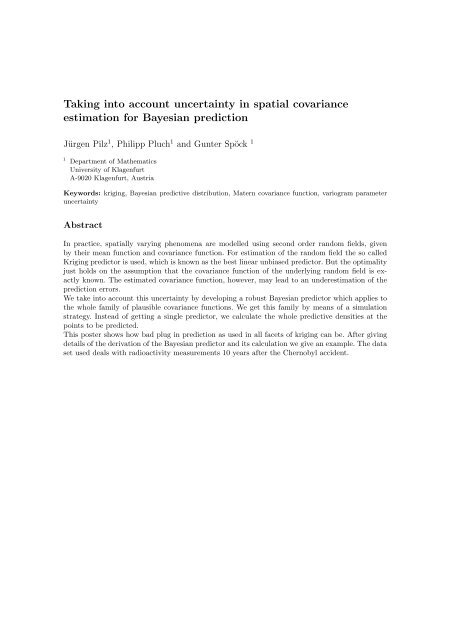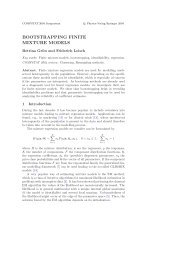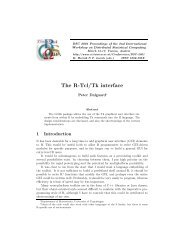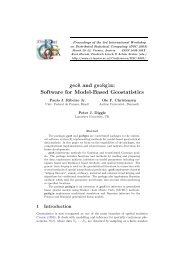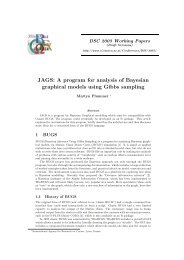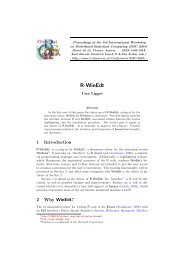Embedding R in Windows applications, and executing R remotely
Embedding R in Windows applications, and executing R remotely
Embedding R in Windows applications, and executing R remotely
You also want an ePaper? Increase the reach of your titles
YUMPU automatically turns print PDFs into web optimized ePapers that Google loves.
Tak<strong>in</strong>g <strong>in</strong>to account uncerta<strong>in</strong>ty <strong>in</strong> spatial covariance<br />
estimation for Bayesian prediction<br />
Jürgen Pilz 1 , Philipp Pluch 1 <strong>and</strong> Gunter Spöck 1<br />
1 Department of Mathematics<br />
University of Klagenfurt<br />
A-9020 Klagenfurt, Austria<br />
Keywords: krig<strong>in</strong>g, Bayesian predictive distribution, Matern covariance function, variogram parameter<br />
uncerta<strong>in</strong>ty<br />
Abstract<br />
In practice, spatially vary<strong>in</strong>g phenomena are modelled us<strong>in</strong>g second order r<strong>and</strong>om fields, given<br />
by their mean function <strong>and</strong> covariance function. For estimation of the r<strong>and</strong>om field the so called<br />
Krig<strong>in</strong>g predictor is used, which is known as the best l<strong>in</strong>ear unbiased predictor. But the optimality<br />
just holds on the assumption that the covariance function of the underly<strong>in</strong>g r<strong>and</strong>om field is exactly<br />
known. The estimated covariance function, however, may lead to an underestimation of the<br />
prediction errors.<br />
We take <strong>in</strong>to account this uncerta<strong>in</strong>ty by develop<strong>in</strong>g a robust Bayesian predictor which applies to<br />
the whole family of plausible covariance functions. We get this family by means of a simulation<br />
strategy. Instead of gett<strong>in</strong>g a s<strong>in</strong>gle predictor, we calculate the whole predictive densities at the<br />
po<strong>in</strong>ts to be predicted.<br />
This poster shows how bad plug <strong>in</strong> prediction as used <strong>in</strong> all facets of krig<strong>in</strong>g can be. After giv<strong>in</strong>g<br />
details of the derivation of the Bayesian predictor <strong>and</strong> its calculation we give an example. The data<br />
set used deals with radioactivity measurements 10 years after the Chernobyl accident.


